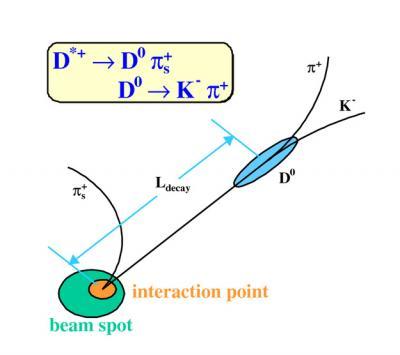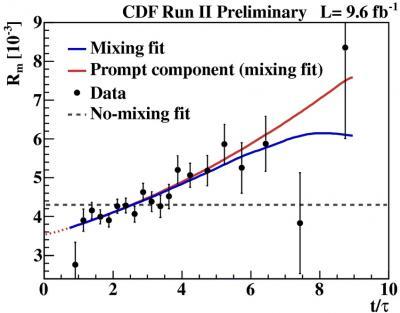Since the discovery of the charm quark in 1974, physicists have postulated a rare process in which a charm particle spontaneously changes into its antiparticle. Evidence for this behavior was uncovered three decades later by experiments in the US and Japan. However, conclusive observation did not emerge until this year from the CERN laboratory in Switzerland and Fermilab in the U.S.
What is a charm quark? Protons and neutrons, the particles in an atomic nucleus, are made of smaller pieces called quarks and some types of quarks can form particles that exhibit surprising behaviors.
Mark Mattson, Ph.D., assistant professor-research, and Paul Karchin, Ph.D., professor, from Wayne State University's Department of Physics and Astronomy, led a large collaborative effort of physicists at the Fermi National Accelerator Laboratory (Fermilab) in Illinois reporting a bizarre "social" behavior of particles containing "charm" quarks: an observation of "charm mixing."

The decay of the D*+ into a D0 and a soft (low-momentum) pion. The D0 then decays into a negative kaon and a positive pion. This is called a right-sign decay. Another decay mode called a
wrong-sign, which is very rare, can occur. In this mode, the D0 decays into a positive kaon and a negative pion. Credit: Paul Karchin
Mattson and Karchin worked closely with team co-leaders from Fermilab and the University of Siena in Italy. Robert Harr, Ph.D. and Alexey Petrov, Ph.D., professors of physics and astronomy at Wayne State, served as team advisors.

The ratio of the rare D0 decay mode (K+pi-) to a more common one (K-pi+) versus decay time, measured in units of the D0 lifetime. If the mixing process did not occur, the ratio would remain
unchanged with time. The measured ratio includes decays from prompt and non-prompt D0 mesons (blue curve). The ratio using only prompt decays is shown by the red curve. Credit: Paul Karchin, Wayne State University
Future measurements with improved precision and refined theoretical interpretation may elucidate the puzzle of why particle matter in the universe overwhelmingly dominates over antimatter.
Published in Physical Review Letters.
Source: Wayne State University.




Comments